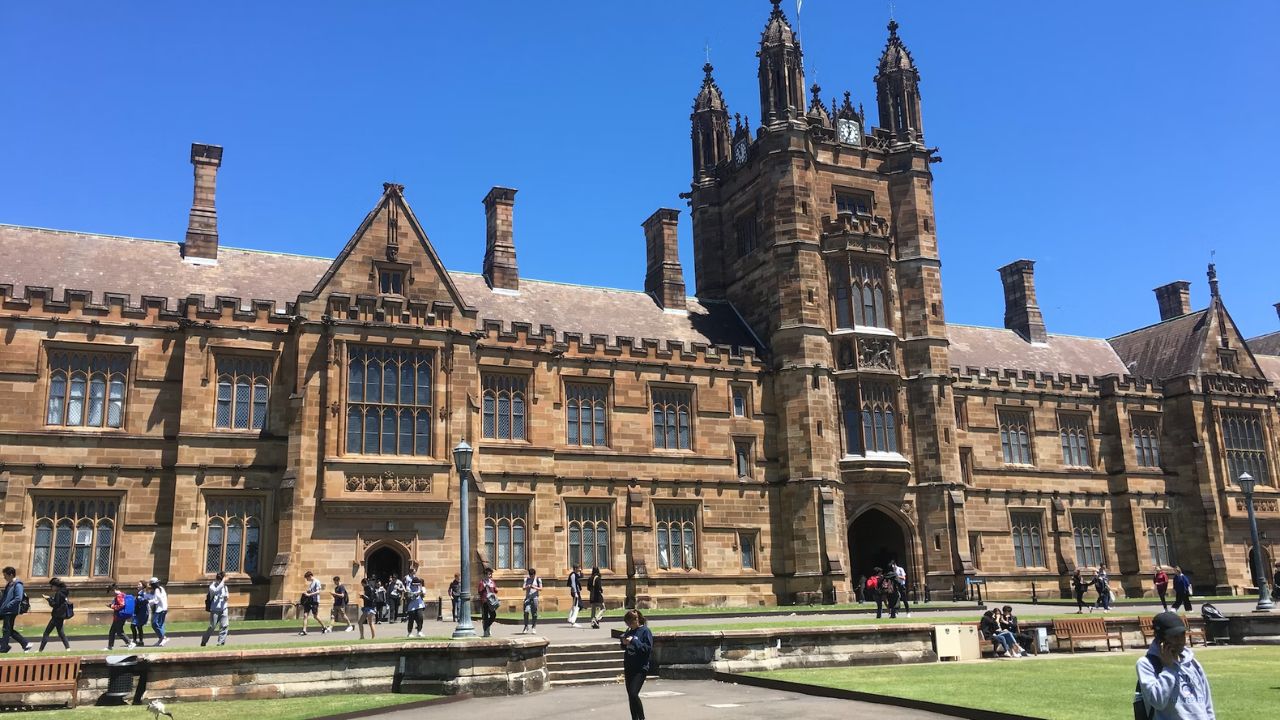Table of Contents
Introduction
Australia offers a welcoming environment for international students, with five cities ranking in the top 30 globally. Australia is a popular destination for international students, with 469,248 students arriving between January and May 2023. The number of applications to Australian universities is increasing, and competition for enrollment is also rising. International students can apply to Australian universities during three intakes: February, July, and November. There are also September and November intakes, with a minimal selection of courses. With an estimated 161,000 new international students expected to arrive in Australia in 2023, it is essential to know about the Australian intakes in 2023 for international students. In this blog, we will answer every possible question that students may have regarding Australia Intake 2023.
Which Intake In Australia Should One Opt For?
The choice of intake in Australia depends on various factors such as the course you want to pursue, the university you want to attend, and your circumstances. The February intake is the primary intake and covers a wide range of courses offered by almost every university in the country. It starts in February and offers many chances for financial help and scholarships.
Although there are fewer universities and courses offered in the July intake, there are still good possibilities for overseas students. It’s important to note that there are additional September and November admissions, although the course options are limited. Additionally, there may be admissions for vocational courses in May, July, or January.
Intakes Deadlines In Australia
Intake deadlines can vary based on the university and the level of your programme. Following is an overview of these Australia intake deadlines to help you plan your application effectively.
General Intake Deadlines
- February Intake: For programmes starting in February, it’s advisable to submit your application between October and November of the previous year. This allows ample time for processing.
- July Intake: If you aim to begin your studies in July, submit your application between April and May. Meeting this deadline ensures a smooth admission process.
- November Intake: For November intakes, make sure to apply by September to secure your spot in the programme.
Master’s Degree Deadlines
For master’s degree programmes in Australia, there are distinct rounds of deadlines. These rounds might vary slightly from one university to another. Applying during these rounds gives you the advantage of early consideration.
- Round 1: Early August
- Round 2: Early October
- Round 3: Early November
- Round 4: Early February
- Round 5: Early April
- Round 6: Mid-June
Specialised Deadlines
Some universities in Australia have specific deadlines for:
- Course Applications: Ensure you are aware of the deadlines for course applications, which may differ from the general intake dates.
- Scholarship Applications: If you’re seeking financial assistance, check the scholarship application deadlines. These can be distinct from regular intake dates.
It’s essential to check the official websites of your preferred universities for specific dates and variations. Additionally, for business schools, aiming for an application before Round 4 provides extra time for other essential processes, making your journey to studying in Australia smoother and more efficient.
Deadlines For Admissions At Top Australian Universities
Making a timely application is crucial for securing your spot in these prestigious institutions. To help you plan effectively, the following are the compiled admission deadlines for both bachelor’s and master’s degree programmes at the 10 best Australian Universities.
| University Name | Bachelor Degree Deadline | Masters Degree Deadline |
| Australian National University | Semester 1: December 15, 2023 | Semester 1: December 15, 2023 |
| Semester 2: May 15, 2023 | Semester 2: May 15, 2023 | |
| The University of Melbourne | Semester 1: October 31, 2023 | Semester 1: October 31, 2023 |
| Semester 2: May 31, 2023 | Semester 2: April 30, 2023 | |
| The University of Sydney | Semester 1: January 30, 2023 | Semester 1: January 31, 2023 |
| Semester 2: July 17, 2023 | Semester 2: July 15, 2023 | |
| University of New South Wales | Semester 2: March 31, 2023 | Semester 2: March 31, 2023 |
| Semester 3: July 31, 2023 | Semester 3: July 31, 2023 | |
| The University of Queensland | Semester 1: November 30, 2023 | Semester 1: November 30, 2023 |
| Semester 2: May 31, 2023 | Semester 2: May 31, 2023 | |
| Monash University | Rolling Based | Semester 1: January 15, 2023 |
| Semester 2: July 31, 2023 | ||
| The University of Western Australia | Semester 1: December 1, 2023 | Semester 1: December 10, 2023 |
| Semester 2: July 1, 2023 | Semester 2: July 1, 2023 | |
| University of Adelaide | Semester 1: December 1, 2023 | Semester 1: December 1, 2023 |
| Semester 2: May 1, 2023 | Semester 2: May 1, 2023 | |
| University of Technology Sydney | Semester 1: December 30, 2023 | Semester 1: April 30, 2023 |
| Semester 2: January 15, 2023 | Semester 2: June 30, 2023 |
Eligibility Criteria For Australia Intakes

The eligibility criteria for Australia 2023 intakes vary depending on the university and the course you are applying for. It’s crucial to visit the official websites of the universities you are interested in to ensure you have the most up-to-date information on eligibility criteria and requirements. International students must, however, fulfil a number of criteria in order to be considered for admission. These include:
- Academic qualifications: International students must have completed their secondary education and obtained a certificate that is equivalent to the Australian Year 12 certificate.
- English language proficiency: International students must demonstrate their proficiency in English by taking an English language test such as IELTS, TOEFL, or PTE Academic.
- Visa requirements: To study in Australia, international students need to apply for a student visa.
- GRE Or GMAT Scores: For the 2023 intake in Australia, GRE or GMAT scores have become optional at some universities. A GRE score of 280 or a GMAT score of 650 is typically considered strong for admission.
Documents Require For Australia Intake
Applying for Australia intake as an international student, must meet certain eligibility criteria and submit specific documents. In addition to these, the following documents are typically required:
- Academic transcripts: Certified copies of your academic transcripts from high school and any post-secondary institutions you have attended.
- English language test scores: Certified copies of your English language test scores.
- Passport: International students applying for Australia intake must provide a certified copy of their passport.
- Visa documentation: Documentation related to your student visa application.
- Statement of purpose: A statement outlining your academic background, career goals, and reasons for studying in Australia.
- Letters of recommendation: Recommendation letters from instructors or professors who are familiar with you could be one of the important documents required for Australia intake.
- Resume/CV: A copy of your resume or CV.
- Portfolio: A portfolio of your work, if required for the course you are applying to.
- Financial documents: Proof of financial support, such as bank statements or scholarship letters.
- Medical documents: Medical certificates or immunisation records, if required by the university.
- Police clearance certificate: A police clearance certificate from your home country, if required by the university.
How Should I Apply For Australia Intake 2023?
Australia’s application process varies by university, but the following are the standard steps to apply for Australian intake which include:
1. Research and Shortlist: Begin by researching universities and courses that align with your academic goals. Seek assistance from experts with ties to over 300 institutions to make informed choices.
2. Check Eligibility: Ensure you meet academic and language proficiency requirements, as well as any specific criteria set by your chosen universities.
3. Gather Documents: Collect vital documents, including academic transcripts, language test results, and your passport. Expert assistance can streamline this process.
4. Online Application: Most universities offer online applications. For a seamless experience, consider professional guidance to avoid application errors.
5. Pay Application Fee: Fees vary by institution and programme, so be prepared to make the required payment.
6. Await Response: After submission, patiently await the university’s decision, and once accepted, confirm your seat. This streamlined process ensures a smoother journey to your Australian academic adventure in 2023.
Benefits Of Australia Intake 2023
Following are some benefits that student may experience while studying in Australia:
- Australian universities are globally recognized for their academic excellence and research, making them a sought-after study destination.
- International students can apply to Australian universities during three intakes: February, July, and November. This provides flexibility in planning and allows students to choose the intake that best suits their needs.
- The February intake is the primary intake and provides ample opportunities for scholarships and financial aid.
- Australia is a multicultural country, and studying there can provide international students with the opportunity to meet people from different cultures and backgrounds.
- Studying in Australia can provide international students with valuable career opportunities. The country has a strong economy and is home to many multinational companies. Upon completion of a degree programme at an Australian university, international students become eligible for a PSW (post-study work) permit, which allows them to work in Australia for up to six years.
Conclusion
Studying in Australia also provides international students with access to world-class education and research facilities that can help them achieve their academic goals. Australian universities are globally recognized for their academic excellence and research, making them a sought-after study destination. With flexible intakes, ample scholarship opportunities, and valuable career prospects, studying in Australia can be a life-changing experience for international students.
FAQs
Q1. How many intakes are there in Australia?
Ans: International students can apply to Australian universities during three intakes: February, July, and November.
Q2. What are the deadlines for Australia intakes in 2023?
Ans: The deadlines vary depending on the university and the course you are applying for. It’s crucial to visit the official websites of the universities you are interested in to ensure you have the most up-to-date information on deadlines and requirements.
Q3. What documents are required to apply for Australian university intakes?
Ans: International students must meet certain eligibility criteria and submit specific documents. These include academic transcripts, English language test scores, passport, visa documentation, statement of purpose, and letters of recommendation.
Q4. What are the eligibility criteria for Australian intakes?
Ans: The eligibility criteria vary depending on the university and the course you are applying for. However, some general requirements that international students must meet include academic qualifications, English language proficiency, and visa requirements.
Q5. What is a PSW permit?
Ans: Upon completion of a degree programme at an Australian university, international students become eligible for a PSW (post-study work) permit, which allows them to work in Australia for up to six years.
Thank you for reading about the “Detailed Guide to Australia Intake 2023-24”. If you’re interested in exploring more articles on related topics, we recommend checking out the below articles:











0 Comments